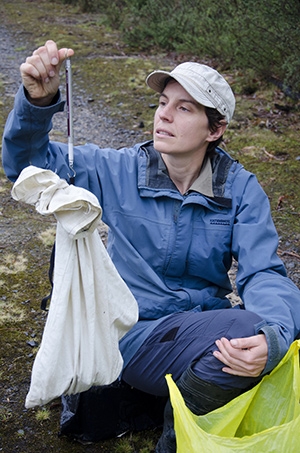People power protects Australian wildlife
Research news
The "Wildlife Spotter" project is asking the public to identify animals in images from automated cameras.
Scientists are calling on the latest technology and people power in an initiative that aims to understand and protect endangered wildlife across the country.
Launched during National Science Week, the web-based project "Wildlife Spotter" asks the public to analyse over a million photographs captured by motion sensing cameras in tropical rainforests, dry grasslands and around cities.
Animals such as superb lyrebirds, wombats, bandicoots, brush turkeys and Tassie devils, and predators like feral cats and foxes, are being identified through the project.
Volunteers work at their own computers and can classify images from any of six zones from across Australia.
The project is proving extremely popular, with over 35,000 volunteers now involved and over 900,000 images already identified.
Areas being monitored are: South-Central Victoria (bandicoots); Tasmania (marsupials); far north Queensland (Northern Bettongs); NSW; the Northern territory (arid zone); and semi-arid and arid parts of Australia (Mallee fowl).
Ms Sarah Maclagan, a researcher from Deakin’s Centre for Integrative Ecology, is leading the Victorian arm of the project, which focusses on South-Central Victoria.
Ms Maclagan is investigating the threatened Southern Brown Bandicoot for her PhD, to build understanding of the ways that bandicoots and other native wildlife can survive urban expansion.
Her PhD supervisors are Deakin’s Dr Euan Ritchie and Dr Terry Coates from the Royal Botanic Gardens Cranbourne.
The bandicoot is surviving in narrow linear strips of habitat along roads, drains and railway lines on the outskirts of Melbourne. Bandicoots were once common across the Melbourne region, but now Cranbourne’s Royal Botanic Gardens has the population closest to the city.
“As part of my project, I am trying to discover whether bandicoots are changing their daily activity patterns to avoid introduced predators or competitors like foxes, cats, rabbits or rats,” said Ms Maclagan.
“For instance, they may be becoming less nocturnal as a way of avoiding predators. Understanding these adaptations gives us the best chance to manage them into the future.”
“Wildlife Spotter” has included a competition as extra incentive for the public. The “individual” winner will receive a Go Pro Hero 4 and the winning school group will receive a Go Pro and a visit from science celebrity Dr Karl Kruszelnicki.
Ms Maclagan explained that the use of automatic cameras to monitor wildlife in Australia has exploded over the past few years. There are now hundreds of cameras snapping wildlife all over the country.
“Analysing the thousands of photographs scientists are capturing would be almost impossible without the help of the public,” she said.
“The concept of ‘Citizen Science’ is being used very effectively to monitor wildlife around the world. It is a great way to educate and engage the community and make a real difference to the fate of our wildlife.”
“Another thing I hope people take out of ‘Wildlife Spotter’ is the ability to recognise a bandicoot from a rat. It always amazes me how few people know what a bandicoot looks like - including people who’ve lived in bandicoot country for years and seen them running around, but always thought they were huge rats.”
The project is an initiative of ABC Science, in collaboration with Deakin University, the Australian Museum,Tasmanian Land Conservancy, Charles Darwin University, the NSW Office of Environment, Saving our Species, World Wide Fund for Nature, James Cook University, and Queensland Government.
Share this story

Key Fact
Ms Sarah Maclagan is studying the habits of the endangered Southern Brown Bandicoot.
